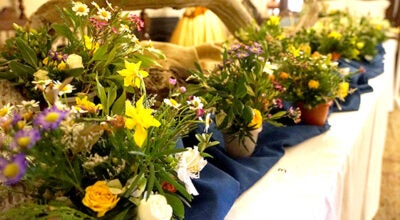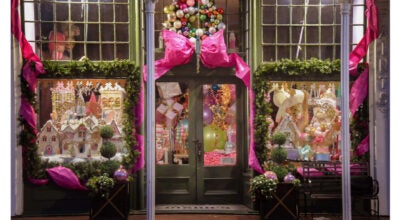Louisiana State University exhibit celebrates tricentennial
Published 12:03 am Sunday, July 17, 2016

- SUBMITTED PHOTOS — Louisiana State University is celebrating the Natchez Tricentennial with an exhibit of artifacts in its holdings related to Natchez, including historic maps, engravings depicting the life of the Natchez Indians and historic photographs of Natchez history. Also included in the exhibit are photographs donated by the late Dr. Tom Gandy and former Natchez resident Joan Gandy.
Only separated by the mighty Mississippi River, Natchez and Louisiana have a deep historical connection.
Louisiana holds the fertile flood plain where many Natchez planters built their plantations and amassed their wealth.
That connection is a piece of the 300-year story an exhibition presented by the Louisiana State University Libraries Special Collections at Hill Memorial Library seeks to showcase.
In honor of the City of Natchez’s tricentennial celebration, “From Grand Village to Bluff City: 300 Years of Natchez History” will be on display unitl Sept. 13 at the library located on the quad of the LSU campus.
Head of Public and Research Services Tara Laver said LSU has a really strong collection of Natchez historical materials in its Louisiana and Lower Mississippi Valley Collections within the Libraries Special Colletions.
“When the tricentennial was coming, we wanted to highlight this collection through an exhibit,” Laver said.
The exhibit spans 300 years, with historical documents, photographs, rare books, maps and newspapers telling Natchez history from the Natchez Indians into the 21st century.
The exhibit includes a three-volume record written by French historian and naturalist Antoine Simone Le Page du Pratz about his time in Natchez and Louisiana, with drawings that LSU has reproduced.
One section of the exhibit features Natchez’s connection to the North and Natchez as a destination for Northerners who came to the South to make their wealth.
Another section is about slavery and the role it played in the city’s history and including a map of the Forks of the Road in Natchez, the second-largest slave market in the South.
One of Laver’s favorite materials in the exhibit is a yellow fever quarantine poster.
“It talks about the the yellow fever quarantine rules and how they applied to Natchez,” Laver said.
For the Civil War period, the exhibit includes the diary of Patrick Murphy, an Irish immigrant and bridge builder and engineer who came to Natchez.
“In his diary, he talks about his experience both in Natchez and in the war,” Laver said. “It’s interesting because you get that Irish immigrant perspective. A lot of times you think about Irish immigrants being in big cities like New Orleans or New York, but there was a sizeable Irish immigrant population in Natchez.”
For the late 19th century and early 20th century period, a section of the exhibit focuses on prominent Jewish merchants in town after the war and includes photographs of their businesses and families.
Some of the more colorful cases in the exhibit contain materials about the history of tourism, Laver said, from photographs and printed materials of Pilgrimage to the emergence of the National Park Service and the focus on inclusive tourism and discussion of developing the Forks of the Road as an interpretive site.
“We really tried to take it full circle, from the Natchez Indians period to today,” Laver said.
Another exhibit includes notable literary figures from Natchez or who used Natchez in their works.
The exhibit also features 30 photographs from Natchez in Historic Photographs of the Thomas and Joan Gandy collection that is on display at First Presbyterian Church in Natchez.
Laver served as the curator of special collections for approximately 16 years, and has had many opportunities to visit Natchez to work toward expanding LSU’s collection of Natchez materials.
“Natchez just has a way of making you fall in love with it,” she said. “Natchez is a strength of our collection because we have so many materials … and we thought the tricentennial was a great opportunity to highlight a lot of those materials and hopefully spark new ideas or additional research.”
Natchez Tricentennial liaison Kelin Hendricks said the city is honored the LSU Libraries Special Collections curated a special exhibit for the celebration.
“What makes this exhibition so interesting to me is that through its exploration of the rich, detailed past of Natchez, it reveals how connected the people of the Lower Mississippi River Valley are to one another, and that we share a much more similar story than our state lines today would lead to believe. The story of Natchez, while very unique, is still the story of the struggles and triumphs of many towns and cities along the Mississippi River.”





